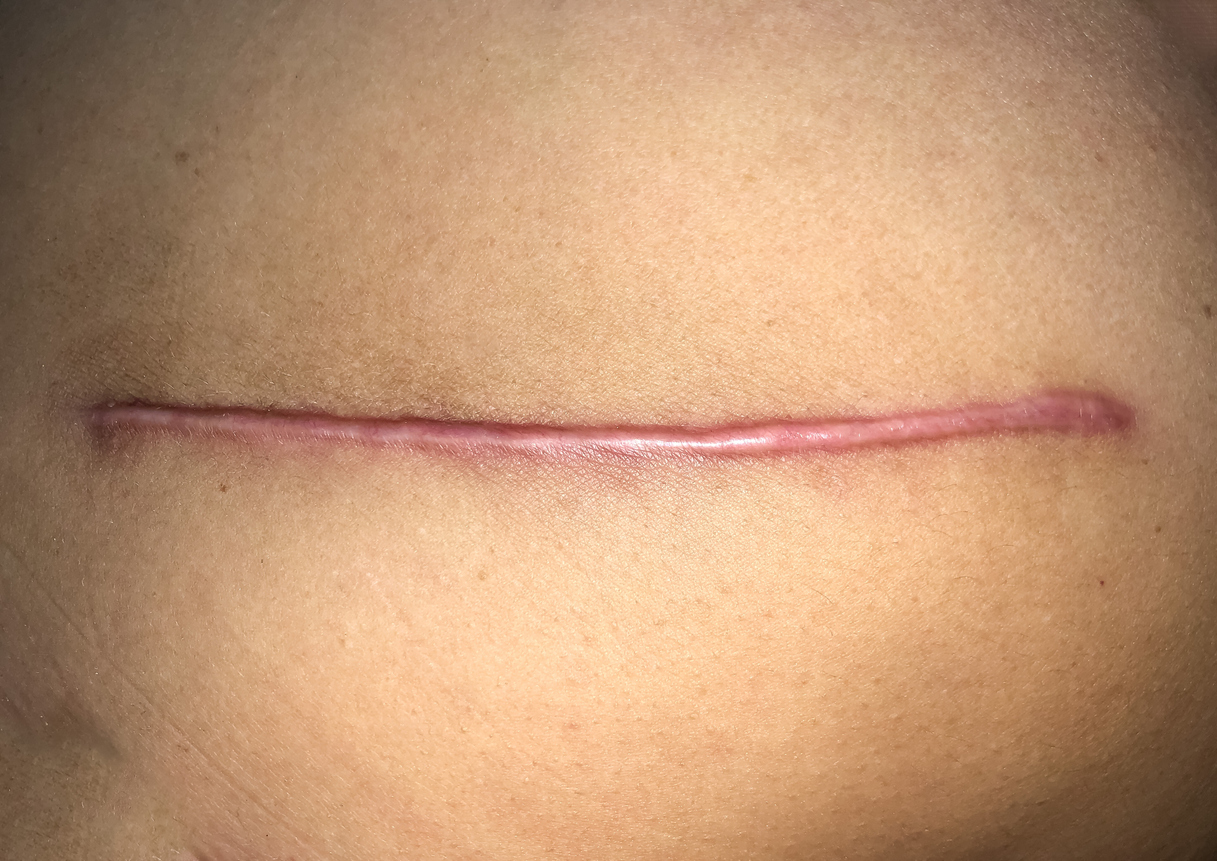Hypertrophic scars form as thick, raised scars that stay within the boundaries of the original wound. Unlike keloid scars, hypertrophic scars do not extend beyond the injury site, but they can appear red, swollen, and firm. These scars typically occur after burns, surgical incisions, or significant skin trauma and can affect both appearance and movement, especially when located over joints. While hypertrophic scars may fade and flatten over time, they can cause discomfort, itching, or pain, prompting patients to seek treatment for both aesthetic and functional reasons.
Hypertrophic scars form when excess collagen is produced during the healing process, resulting in a raised and firm appearance. This overproduction of collagen occurs due to factors such as deep skin trauma, burns, or surgeries. Unlike keloids, hypertrophic scars remain confined to the original injury site but can be more noticeable due to their height and coloration. Over time, these scars may flatten and fade, but they can still cause discomfort, particularly in areas prone to movement. Early intervention can help reduce scar formation and improve the long-term appearance and function of the affected area.

(Available on Excel V and Excel V Plus)
Best for
Mild cases or isolated vessels.
How It Works
The long-pulse Nd:YAG laser emits energy at a wavelength absorbed by haemoglobin in blood vessels. This heat causes the targeted vessels to collapse, effectively treating both surface red veins and deeper blue veins.
Results
Treated vessels may disappear immediately or gradually fade over several weeks.
(Candela VBeam Perfecta, Excel V, Excel V Plus, Sciton BBL)
Best for
More severe cases or large areas of visible facial veins and redness, particularly in rosacea.
How It Works
This approach layers multiple vascular-targeting technologies in one session, including:
Results
Effectively reduces visible veins, diffuse redness, and facial flushing commonly seen in rosacea.
(Candela VBeam Perfecta, Excel V, Excel V Plus, Sciton BBL)
Best for
Stimulating collagen and vascular remodelling to reduce persistent skin redness.
How It Works
Often recommended in combination with vascular laser or BBL treatments to enhance skin healing, texture, and redness reduction.

Laser treatments can significantly reduce the redness, thickness, and discomfort associated with hypertrophic scars. While lasers don’t completely remove scars, they improve their appearance and make them less noticeable.

The Candela VBeam is particularly effective in reducing redness and treating hypertrophic scars. Fractional ablative lasers, such as Alma Hybrid and Acclaro Ultraclear, are commonly used to flatten raised scars and enhance skin texture by stimulating collagen remodelling.

Typically, 3–5 sessions are needed for noticeable improvements. The exact number depends on the size, age, and severity of the scar, as well as your skin’s response to treatment.

Patients often experience minimal discomfort during treatment, described as a mild snapping or warming sensation. Numbing creams ,local anasthesia and cooling devices are available to enhance comfort during the procedure.

Recovery time depends on the type of laser used. Pulse dye lasers typically involve minimal downtime, although temporary purpura (bruising) may persist for up to a week. Fractional ablative lasers generally require a healing period of up to seven days.

Side effects may include temporary redness, swelling, and mild irritation. Rarely, pigmentation changes or blistering can occur, particularly in darker skin tones. Choosing a qualified dermatologist minimizes these risks.